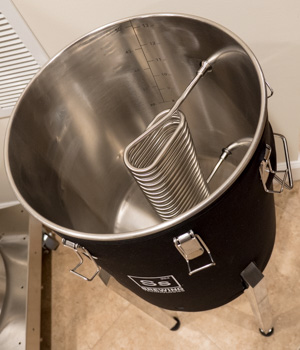This week I dive into the very important topic of cleaning and sanitation for beer brewing and cover some of the basic terms and definitions. In part 2 I’m going to cover the cleaning process and strengths and weaknesses of different cleaners, and in part 3 I will cover sanitation and sanitizers.
Why is Cleaning and Sanitation Important for Beer
Several factors make cleaning and sanitation more important for beer than it is for wine, mead and many other types of beverage making:
- Wort is a nearly ideal environment for bacterial growth – If you’ve left wort sitting exposed, you’ll find that unattended wort very quickly sour by itself.
- Bacteria Compete with Yeast – If bacteria are present in large numbers during fermentation they will actually compete with the yeast and may inhibit a healthy fermentation while also souring the beer.
- Beer has a low alcohol level – Unlike wines or hard liquor, the alcohol level in beer is not high enough to preserve it. With the exception of very high gravity beers, the alcohol level is not high enough to prevent souring.
- We rarely add preservatives – While many commercial breweries filter their beer, we don’t use sulfites or other preservatives that are common in wine and mead making
- Hops are a preservative, but they have limits – Hops are antibacterial, so they do help prevent bacteria from souring a beer well after fermentation has completed. However their preservative effect is limited, so if enough bacteria is present the beer will sour over time. So we want to limit the bacteria present in a beer.
- Long Term Stability Risk – Bacteria can continue to act on a beer even after fermentation has completed, so they can sour the beer weeks or months after the beer has fermented.
On the good news side, no known pathogen lives in beer, so while your beer might not taste good it is unlikely to seriously injure anyone if it gets infected.
Cleaning vs Sanitation vs Disinfection vs Sterilization
For beer brewing we are primarily concerned with cleaning and sanitation. However some brewers use the wrong terms, so here’s the definitions of each process and what it accomplishes:
- Cleaning: Cleaning is the act of removing soil and dirt from surfaces. Soil comes in two forms: organic and inorganic. Organic soil includes obvious things like yeast, malt bits, and hops. Inorganic soil includes things like beer stone that forms at the bottom of your boiler.
- Sanitization: Reduces the microorganisms on the surface to the point where they won’t harm the beer or impact fermentation. The EPA defines this at a 99.9% level.
- Disinfection: A higher level of cleaning that kills viruses as well as bacteria to a 99.999% level though it does not kill all of the spores that could potentially develop into viruses.
- Sterilization: Removes all microbes and their spores from a surface. This level of cleanliness is typically reserved for surgery and operating rooms and is often done with an autoclave.
For beer brewing, we are concerned with the first two processes: cleaning and sanitation. We need to clean all of our equipment to remove both organic and inorganic soils, and we need to reduce the bacterial level on any surface that touches cooling or chilled wort to a point where it won’t affect our fermentation or long term stability.
The Brewing Location – Where Bacteria Comes From
While a lot of brewers take care with their cleaning and sanitation, I wanted to point out that the location where you brew is also important. The bacterias we are primarily concerned with like Lactobacillus, Pediococcus, and Acetobacter as well as wild yeast are present just about every surface inside and outside our house. So where you brew matters.
The #1 location for home brewing is in the garage, which also happens to be one of the dirtiest locations in your home. The #2 location is your laundry area which also has high concentrations of wild yeast and bacteria from dirty laundry. Similarly outside is not a clean location to brew. So consider choosing a good location as well as taking precautions to protect and keep your clean, sanitized equipment away from soils and contamination while you brew.
Another serious consideration is that malt has high concentrations of both wild yeast and bacteria on its surface. Milling your malts throws up a ton of dust, so I strongly recommend milling your malts well away from where you brew and ferment your beer to minimize throwing malt dust over your entire brewing system.
I hope you enjoyed this week’s short introduction to cleaning and sanitation. Next week in part 2 I will cover the cleaning process and what cleaners to use, and in part 3 I will discuss sanitation and sanitizers. Please subscribe for regular weekly delivery, and don’t hesitate to retweet, link, like or mention any of my articles on social media.

